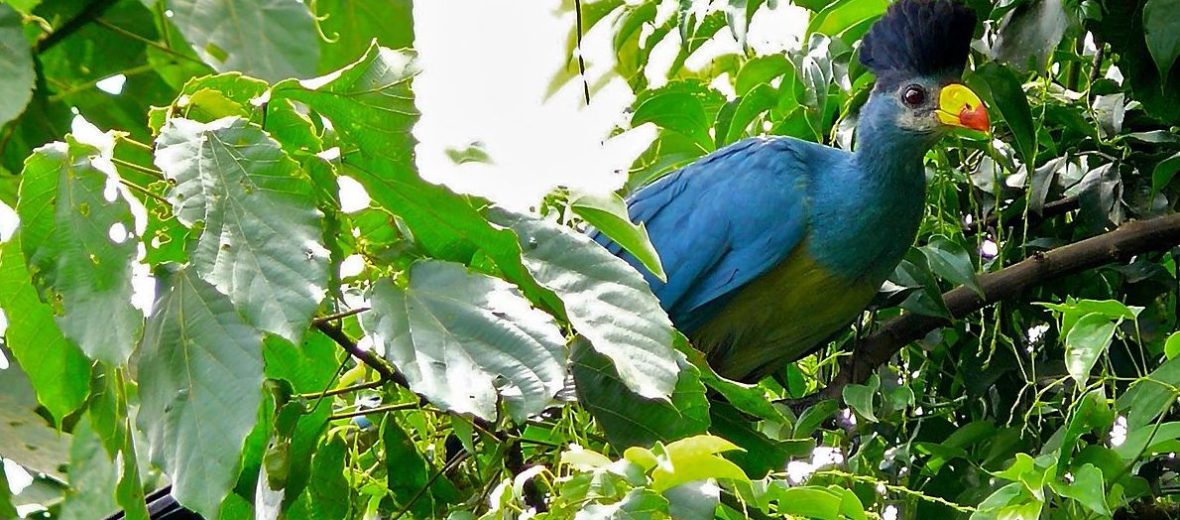
The great blue turaco can be found throughout western and central Africa. They prefer rainforests and tree-laden savanna habitats. These turacos are the largest of the known species. With no major threats, sans habitat loss at the hands of deforestation; hunting; and trapping, these birds have a stable population and are thus listed as Least Concern by the IUCN.
First the Stats…
Scientific name: Corythaeola cristata
Weight: Up to 2.7 lbs.
Length: Up to 30 inches
Wingspan: Up to 20+/- inches
Lifespan: Up to 30 years
Now on to the Facts!
1.) These birds are gregarious and gather into groups of up to 10 individuals.
2.) With a smaller wingspan, they aren’t the most skilled of flyers. But they are adept at climbing through tree branches.
3.) Being arboreal (spend their lives in trees) these birds seldom come to the ground, sans to bathe and drink.
4.) Great blue turacos are diurnal (active during the day).
5.) Their calls are soft trills and voluminous, guttural “kok-kok-kok” sounds.
But wait, there’s more on the great blue turaco!
6.) The diet of a great blue turaco consists primarily of fruit, but they also eat buds, leafs, and flowers.
7.) They are monogamous (mate for life).
Did you know…?
These birds belong to the family called Musophagidae. This translates to “banana eaters.” Other birds in this family are go-away-birds and plantain-eaters.
8.) Both the male and female construct a nest of dry sticks, in a taller tree, typically close to water.
9.) Females lay up to 2 eggs that hatch in up to 31 days.
10.) Both parents participate in incubation and rearing.
But wait, there’s still more on the great blue turaco!
11.) Chicks leave the nest in up to 6 weeks. They are independent in up to 3 months.
12.) In the locale called Bandundu, near the city of Kikwit – Democratic Republic of the Congo, these turacos are called “Kolonvo.”
Did you know…?
Young turacos have claws on their wings that aid in climbing trees.
13.) Talismans are made from the yellow and blue feathers of these turacos.
14.) Their main predators are eagles, chimpanzees, and humans.
15.) Although people still try, it is best not to keep these birds as pets. They are outdoor birds and need large aviaries. If their requirements aren’t met they will not thrive.
Now a Short Great Blue Turaco Video!
Be sure to share & comment below! Also, check out the Critter Science YouTube channel. Videos added regularly!
Want to suggest a critter for me to write about? Let me know here.
Photo credit: Bernard DUPONT



